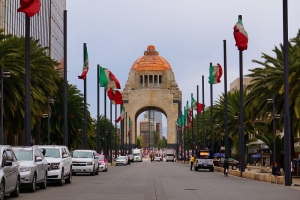Transportation and Land Use Across US and Mexican Cities
This Project Examines how urban form, housing type, and socioeconomic factors covary with individuals’ commute mode choice and commute times for 6 million workers in the US and Mexico. Together, these workers represent 65% and 85% of the total share of all work commuters in the US and Mexico.
A better understanding of the relationship between land use, socioeconomic, and workers’ commuting behavior across multiple urban areas in multiple countries can help shed light on not just the strength and relative importance of different relationships, but also their consistency and the role of regional and social context. Of particular interest are estimates of the relative importance of transportation supply, household income, and the built environment in shaping the radically different commute patterns seen in cities around the globe.


